Table of contents
Yeast flakes consist of inactivated yeast ( single-celled lower fungi, Saccharomyces cerevisiae ) which is dried and processed into flakes or powder. Organic yeast, fed with organically produced substrates, has been available since 2014.
Use in the kitchen:
Yeast is used in the kitchen for low-sodium (low-salt) seasoning and flavoring. It gives dishes a spicy, harmonious note (in the direction of umami). Yeast flakes taste mild, nutty to cheesy and have a flavor-enhancing side effect.
Yeast flakes are a basic ingredient in many vegan spreads. Yeast flakes can also be used to thicken soups and sauces. To do this, stir 2 tablespoons of yeast flakes into 500 ml of liquid after cooking. Since the B vitamins they contain are very heat-sensitive, it is important not to heat the yeast flakes if possible, so it is better to add them after cooking.
Nutritional yeast flakes can be used to make breadcrumbs and vegan omelettes or to refine salads. Yeast powder is also suitable for sprinkling on rice or pasta dishes, as a substitute for Parmesan.
Only fermentation yeast or fresh baker's yeast/brewer's yeast in block form are raw; yeast flakes are not raw. For more information on the different types of yeast, see the ingredient Fresh Baker's Yeast.
Vegan recipe for yeast spread (cheese substitute)
Ingredients (2-3 people): 150 ml water, 4 tbsp yeast flakes, 2 tbsp vegetable margarine, 1-2 tbsp wheat flour, 1 tsp salt, 1 tsp mustard.
Preparation: Melt the margarine in a small saucepan and stir in the flour with a whisk. Add water, yeast flakes, salt and mustard and bring to the boil while stirring. Yeast melt is a vegan cheese alternative that can be used to top pizza, lasagne, gratins or casseroles.
Recipe for vegan parmesan with nutritional yeast
Ingredients: 25 g macadamia nuts ( almonds or sesame seeds are also suitable), 10 g yeast flakes, sea salt andpepper.
Preparation: Chop the ingredients in a food processor or grind them finely and store in the fridge until ready to eat. This vegan parmesan made from yeast flakes refines pasta, rice dishes or salads.
Vegan recipes with nutritional yeast can be found under the note: " Recipes that have the most of this ingredient ".
| Not only vegans or vegetarians should read this: Vegans often eat unhealthily. Avoidable nutritional errors. |
Purchasing - Storage
Yeast flakes are available all year round ; occasionally at larger supermarket chains such as Coop, Migros, Spar, Rewe, Billa or Edeka. Supermarkets such as Denner, Volg, Aldi, Lidl or Hofer rarely stock yeast flakes. Yeast flakes are almost always available as a food supplement and seasoning in selected drugstores, health food stores, organic shops, organic supermarkets ( Alnatura, Denn's Biomarkt etc.) and on the Internet. Dry yeast products such as yeast flakes are often available, but also liquid yeast products, seasonings and yeast-based spreads. There are also sweet yeast flakes, which contain whey powder, honey or flower pollen.
When shopping, look for products without artificial additives and prefer organically produced yeast flakes.
The availability of nutritional yeast varies depending on the size of the store, catchment area, etc. You can find our recorded food prices for the DA-CH countries above under the ingredient image - and by clicking you can see their development at different suppliers.
Storage tips
The shelf life of yeast flakes depends on good storage. After opening the package, yeast flakes should be stored in a dry, dark and cool place. An airtight storage container is best. If no pests or moisture come into contact with them, yeast flakes will last for 1-2 years.
Ingredients - Nutritional values - Calories
Edelhefe has a calorie content of 336 kcal/100g. The protein content is very high at 49.3 g, carbohydrates are 13% and fat makes up about 4%. However, you consume much less than 100 g per meal, namely about 1 tablespoon, which corresponds to an energy value of about 9.5 kcal. 10
Yeast flakes have many valuable ingredients. One tablespoon covers more than 100% of the daily requirement of vitamin B1 (1.2 mg). 100 g of nutritional yeast contains around 41 mg of thiamine (vitamin B1). In comparison: brewer's yeast contains 12 mg/100g and wheat germ contains 1.8 mg/100g. This water-soluble vitamin is important for energy metabolism and the nervous system. 4.10
Although much less, yeast flakes or yeast powder also contain somevitamin B2 : 4 mg/100g. One tablespoon of this covers about 8% of the daily requirement of riboflavin (vitamin B1).Dry yeast has the same amount of this water-soluble vitamin, while yeast-based spice paste has significantly more at 17.5 mg/100g. The heat-resistant but light-sensitive vitamin is necessary for the function of many enzymes and is involved in various metabolic processes. 4,10
The B vitamins also include Folate as a folic acid-active substance group. The water-soluble vitamin is abundant in 100 g of yeast flakes - the 300 µg it contains cover the daily requirement of an adult. However, nobody eats that much of it: 1 tablespoon only provides around 8.5 µg. Pulses make a significant contribution to covering the daily folic acid requirement: lentils (cooked 180 µg/100g), mung beans (cooked 159 µg/100g), chickpeas (cooked 63 µg/100g). 4,10 As the vitamin is very sensitive to heat, the content is significantly reduced when cooked. Naturally occurring folic acid only occurs as a precursor (folate). It is particularly important for cell renewal, which is why pregnant women or those trying to become pregnant are particularly advised to increase their daily folic acid intake to around 550 µg. Read more about it here.
Yeast flakes also contain a negligible amount of vitamin B12 (cobalamin) – around 0.06 µg per 100 g (2% of the daily requirement). 10 Cobalamin is produced exclusively by certain microorganisms from the chemical element cobalt; it only occurs in very small quantities in a purely plant-based diet. For vegans, a dietary supplement is therefore unavoidable. 6 Yeast flakes are particularly suitable for enriching with vitamins, including vitamin B12. If yeast flakes contain a sufficient amount of vitamin B12, they are enriched with vitamin B12. This must be declared accordingly.
Noble yeast also contains vitamin B6 (pyridoxine), vitamin B3 (niacin), vitamin B5 (pantothenic acid) and magnesium.
The type and quantity of yeast flake ingredients depend on the yeast strain, the culture medium and the processing. The ingredients can vary considerably even between yeast products of the same type.
The complete ingredients of yeast flakes, the coverage of the daily requirement and comparison values with other ingredients can be found in our nutrient tables. In the article Nutrients explained you will get a detailed insight into the topic.
Effects on health
Are yeast flakes healthy? In addition to the valuable ingredients (B vitamins, proteins), yeast contains so-called beta-glucans. These polysaccharides are found in the cell walls of grains and fungi (e.g. yeast). Beta-glucans have a number of positive effects on our health: prebiotic, cholesterol and blood pressure lowering, and antioxidant. They support the immune system and have anti-tumor properties. 14 In general , S. cerevisiae has many positive effects on our health. 15
Secondary metabolites of fungi
Many of the health effects of yeast flakes can be attributed to the secondary metabolites they contain. Our article on secondary plant substances provides an overview of the classification of substance groups, their occurrence in foods and possible effects on humans. Yeast ( Saccharomyces cerevisiae) contains the following secondary plant substances: toxins, antibiotics, fatty acids, alkaloids, alcohols and ketones. 18
However, it should be noted that the composition of secondary metabolites in yeast flakes can vary depending on the type of yeast and production conditions. Therefore, quantities are only of limited use and should only be understood roughly.
Dangers - Intolerances - Side effects
Yeast flakes whose yeast is grown on a grain basis (eg a by-product of beer brewing) can contain gluten and are therefore not recommended for people with gluten intolerance or celiac disease. 13 Always read the ingredients and look for the "gluten-free" symbol, which usually appears as a crossed-out ear of corn and sometimes includes the addition "gluten-free" or "gluten free". 8 There are also gluten-free yeast flakes (eg cultivated on rice or molasses).
If you have high uric acid levels or gout, you should avoid foods with a high purine content and not consume more than 400 mg of purine per day. Yeast flakes are one of the foods with a high purine content (>300 mg/100 g). In practice, however, you only eat about 1 g of yeast flakes, which corresponds to 8.5 mg of purine. 17
People with histamine intolerance should not consume yeast extracts. This fermented product is very high in histamine. Some people with histamine intolerance, however, tolerate yeast flakes or yeast powder. This is very individual, everyone should try it out for themselves. They are also unsuitable for people with mold or yeast allergies.
Glutamic acid can trigger an intolerance reaction in some people. This is why yeast flakes or yeast extracts in healthy diets are often criticized negatively. The question arises as to whether yeast products with their natural glutamic acid can also trigger glutamate intolerance. We should also question the naturalness of such products, as the manufacturing processes are subject to relatively intensive processing. Until the end of 2013, even conventional raw materials were permitted for the production of organic yeast products. Since 2014, 95% must come from organic farming. 9
Ecological footprint - animal welfare
Yeast can be produced from cheap raw materials or even waste and the result is a biomass with high-quality proteins. Compared to plants or animals, yeast fungi grow much faster and use the nutrient medium more efficiently - more biomass in a shorter time without seasonal fluctuations. 16
The protein biomass of yeast is an attractive source of food, including as animal feed. Yeast has the potential to gain a foothold as a substitute for meat, fish and soybeans. Yeast protein can be produced/cultivated from agricultural or industrial "waste" and thus helps to recycle material. In view of the decrease in fertile farmland, the ecologically and ethically problematic nature of animal husbandry and the increase in the world population, alternative protein sources are needed. Yeast, with a small environmental footprint, could be suitable for this. 13
According to CarbonCloud, nutritional yeast has a carbon footprint of 3.21 kg CO 2 eq/kg. 19 In comparison, Parmesan has 6.3 kg CO 2 eq/kg. 20 As a rule, people only eat a few grams of nutritional yeast per meal, which keeps the footprint per meal small.
According to ' All you can eat for climate ', active fresh yeast is a climate-friendly food. 21
For detailed explanations of various sustainability indicators (such as ecological footprint, CO2 footprint, water footprint), see our article: What does the ecological footprint mean?
Worldwide occurrence - cultivation
Yeast began to be used as a substitute for the hearty taste of animal products as early as the 1920s; also as a preventative measure against potential deficiencies in a vegetarian diet. Since then, yeast flakes or nutritional yeast can be found in almost all health food stores. 1 The first industrial production of nutritional yeast ( Cyberlindnera jadinii) took place in Germany. 3
Industrial production
Depending on the desired result, strains of different pure yeasts are used. Natural (wild) yeasts usually consist of a mixture of different yeast strains.
To produce yeast flakes, you first need active yeast fungi that grow in a controlled manner on a sugar-rich nutrient medium (e.g. molasses).
The multiplying yeast strains produce a liquid yeast, which is called yeast cream. This mass is sprayed onto rollers and dried (roller drying). The yeast dried for yeast flakes is inactivated by the short-term high temperatures (up to 100 °C), so it does not contain any living fungal cells. Finally, the dry yeast is ground into coarse flakes. 24
As with most foods, production varies from product to product (company-specific recipes); but especially depending on whether the product is organic or conventional.
For example, non-organic baker's yeast (presumably similar to yeast flakes) contains the following substances. Molasses is the source of sugar. Ammonia and ammonium salts are the sources of nitrogen. Sulphuric acid and caustic soda are used to regulate the pH value. Synthetic vitamins, inorganic salts and synthetic defoamers are also permitted.
Similarly, organic baker's yeast also uses molasses or grain. Whey and brewer's yeast provide the nitrogen. The pH value is regulated using sodium carbonate, citric acid or lactic acid. Organic vegetable oils serve as defoamers.
Two washings are necessary according to the conventional method – a lot of waste water ('grey water') is produced.
Washing is not necessary in the organic process. The remaining water is reused as a raw material for other products, for example for organic drinks or as a sourdough starter. 12
A few years ago, yeast was not considered an agricultural ingredient within the meaning of Regulation (EC) No. 834/2007. Therefore, producers did not have to take yeast into account when formulating organic products. Since 2014, yeast products have been considered ingredients of agricultural origin and must also be organic. 22
The production of yeast extract is much more complex. 3
Depending on the strain, but even more so on the composition of the nutrient solution on which the yeast is grown, they differ in their properties and nutritional values. Baker's yeast consumes oxygen and "breathes out" carbon dioxide, which helps loosen the dough. Beer and wine yeasts produce alcohol (ethanol) in the absence of oxygen by fermenting malt or fruit sugar. 2
Further information
Wild yeasts are small organisms that are invisible to the human eye. They are among the lower, single-celled fungi.
When people in the food industry talk about yeast, they mostly mean Saccharomyces cerevisiae, i.e. baker’s or brewer’s yeast.
Yeast flakes should not be confused with yeast extract. Yeast extract is a paste-like protein concentrate that is obtained from the soluble components of fermented yeast via autolysis (with the help of enzymes). 11 It is often included in bouillons and seasonings as a flavoring component. Well-known yeast-based spice pastes in their pure form include Marmite Yeast Extract (UK), Vitam-R (D), Vegemite (AUS), Vegex (USA) and Cenovis (CH).
The well-known dry yeast or fresh yeast is used as a leavening agent for bread, rolls or cake dough. Beer yeast or brewer's yeast is also pure yeast that is used specifically for fermenting beer. It still consists of active yeast fungi.
The glutamic acid contained in the yeast flakes is a naturally occurring amino acid and should not be confused with the glutamates used in industry (E 620 - E 625). Glutamic acid is a building block for proteins and plays an important role in cell metabolism. Glutamate (the ionized form) is produced in the citric acid cycle and acts as a neurotransmitter in the brain. The amino acid glutamine is produced from L-glutamic acid when it binds to the cell poison ammonia released during protein and amino acid breakdown. Foods such as tomatoes, soybeans or fish naturally contain more free glutamic acid. In concentrated form, as tomato paste, fish or soy sauce, it is therefore often used for seasoning. 5,7
Glutamates are the esters and salts of L-glutamic acid. These salts are mainly known as additives (flavor enhancers) in foods. The simple sodium salt, monosodium glutamate (E 621), is the most commonly used. It is produced using a biotechnological process.
Alternative names
What is nutritional yeast? What are nutritional yeast flakes? What is nutritional yeast? What are nutritional yeast flakes?
'Noble yeast' is a term that is used in various contexts. In general, it refers to high-quality yeast strains, selected for specific applications in food and beverage production. This distinguishes this yeast from 'wild yeast'.
Noble yeast flakes and nutritional yeast are synonyms for yeast flakes. In German they are also known as yeast powder or seasoning yeast flakes.
In English, yeast flakes are called ‘nutritional yeast’.
In common parlance, the term yeast is usually a synonym for S. cerevisiae. Yeasts are extremely diverse, however. This is made clear by the classification of yeasts alone: yeasts occur in the kingdoms of Ascomycota and Basidiomycota. Researchers estimate that only 1% of all yeasts have been described so far. And this despite the fact that yeast was one of the first microorganisms, or perhaps even the first microorganism, to be discovered (Louis Pasteur, 1857). 23
Other applications
Yeasts are important model organisms for experiments in biotechnological and pharmaceutical research.
They are used to produce technical enzymes or in medicine (for hepatitis B vaccines and the pancreatic hormone relevant to diabetes). Yeast banks store, multiply and distribute commercially usable yeasts.
Bibliography - 24 Sources (Link to the evidence)
| 1. | Beck A, Weber A. Hefeextrakte in (ökologischen) Lebensmitteln - Wertvolle Zutat oder Geschmacksverstärker? Büro Lebensmittelkunde & Qualität. 2011. |
| 2. | Pini U. Das Bio-Food Handbuch. Ullman: Hamburg, Potsdam. 2014. |
| 3. | Kavanagh K, ed. Fungi: Biology and Applications. Third edition. Wiley; 2017: 194 ff. |
| 4. | USDA United States Department of Agriculture. |
| 5. | Populin T, Morret S et al. A survey on the presence of free glutamic acid in foodstuffs, with and without added monosodium glutamate. Food Chemistry. 2007;104(4):1712–1717. |
| 6. | Donaldson MS. Metabolic vitamin B12 status on a mostly raw vegan diet with follow-up using tablets, nutritional yeast, or probiotic supplements. Ann Nutr Metab. 2000;44(5-6):229-234. |
| 7. | Zusatzstoff-online.de Glutaminsäure. |
| 8. | DZG Deutsche Zöliakie Gesellschaft e.V. Lizenzierungsleitfaden für die Lizenzierung des Glutenfrei-Symbols "Durchgestrichene Ähre" in Europa. |
| 9. | Amtsblatt der Europäischen Union. Verordnung (EG) Nr. 1254/2008. 15. Dezember 2008. |
| 10. | Dr. Ritter Edelhefe. Nährwerttabelle. |
| 11. | Tomé D. Yeast extracts: nutritional and flavoring food ingredients. ACS Food Sci Technol. 2021;1(4):487-494. |
| 12. | Ökolandbau. Das Informationsportal. Einsatz von Biohefe. 2022. |
| 13. | Jach ME, Serefko A, Ziaja M, Kieliszek M. Yeast protein as an easily accessible food source. Metabolites. 2022;12(1):63. |
| 14. | Ciecierska A, Drywień ME. Nutraceutical functions of beta-glucans in human nutrition. Rocz Panstw Zakl Hig. 2019;70(4):315-324. |
| 15. | Farid F, Sideeq O et al. Saccharomyces cerevisiae. In: Nabavi SM, Silva AS (ed.) Nonvitamin and Nonmineral Nutritional Supplements. Elsevier; 2019:501-508. |
| 16. | Jach ME, Serefko A. Nutritional yeast biomass: characterization and application. In: Holban AM, Grumezescu AM (Ed.) Diet, Microbiome and Health. Elsevier; 2018:237-270. |
| 17. | Kaneko K, Takayanagi F, Fukuuchi T, et al. Determination of total purine and purine base content of 80 food products to aid nutritional therapy for gout and hyperuricemia. Nucleosides, Nucleotides & Nucleic Acids. 2020;39(10-12):1449-1457. |
| 18. | Jahangeer M, Riasat A et al. Secondary Metabolites from Saccharomyces cerevisiae Species with Anticancer Potential. In: Peixoto Basso T, Carlos Basso L (Ed.) Saccharomyces. IntechOpen; 2021:109-117. |
| 19. | Carboncloud. Schweden. Nutritional yeast, EU. |
| 20. | Reinhardt G, Gärtner S, Wagner T. Ökologische Fussabdrücke von Lebensmitteln und Gerichten in Deutschland. IFEU Institut für Energie - und Umweltforschung Heidelberg. 2020. |
| 21. | Greenpeace Schweiz, Stadt Zürich, Planted Foods AG, Branding Cuisine, Tinkerbelle, Inge, myblueplanet, ProVeg International, Dr. Earth, FightBack und Eaternity. All You Can Eatfor climate - Poster. ayce.earth. 2022. |
| 22. | Amtsblatt der Europäischen Union. Verordnung (EU) 2018/848 des Europäischen Parlaments und des Rates. 30. Mai 2018. |
| 23. | Saravanamurthu R. Industrial Exploitation of Microorganisms. I. K. International Pvt Ltd; 2013:2. |
| 24. | Naturata.at Melasse Hefeflocken, 100 % Bio-Hefe. |

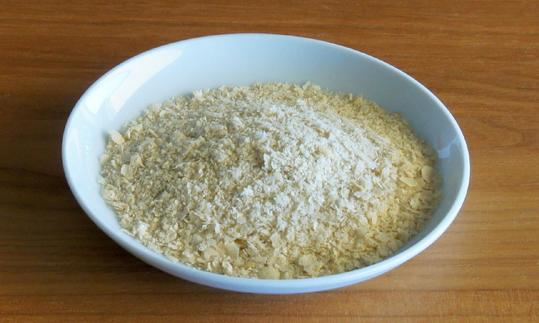

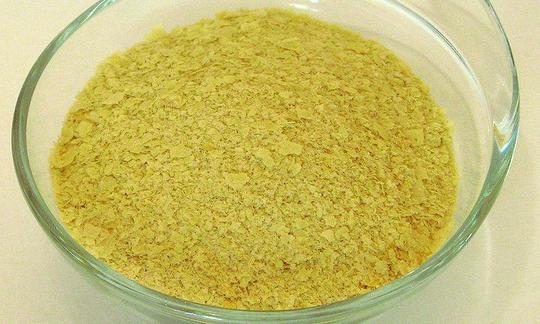

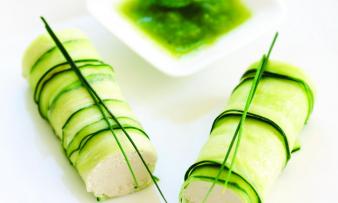
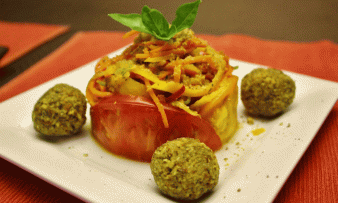
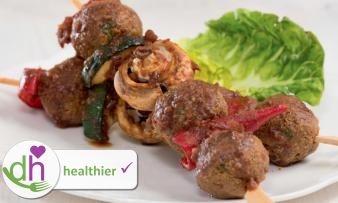
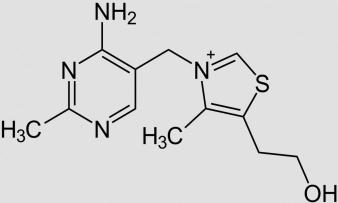
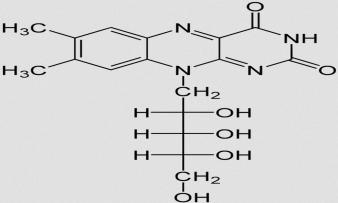



Comments